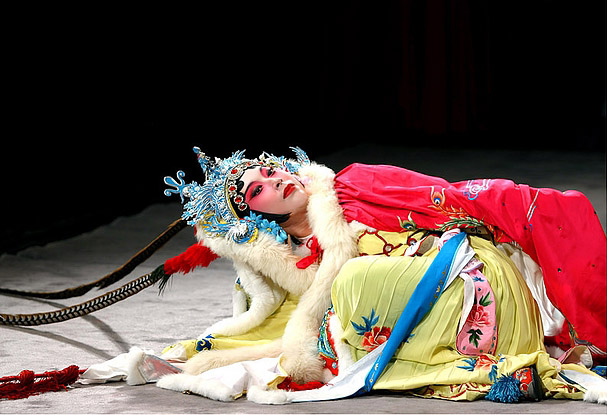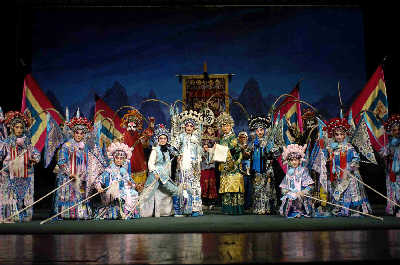
BeijingOpera, also called "Eastern Opera," is a principle tradition in Chinese culture. It is calledBeijingOpera because it is formed in Beijing.
Beijing Opera has a history of 200 years in which its fountainhead can be dated back to old local operas, especially Anhui Opera, which was very popular in northern China in the 18th century. In 1790, the first Anhui Opera performance was held in Beijing to celebrate the Emperor's birthday. Later, some otherAnhui Opera troupes went on to perform in Beijing. Anhui Opera was easy to move and good at absorbing the acting styles of other types of operas. Beijing accumulated many local operas, which made Anhui Opera improve quickly.

At the end of the 19th century and the beginning of the 20th century, after merging for 10 years, Beijing Opera finally formed, and became the biggest of all operas in China.
Beijing Opera has a rich list of plays, artists, troupes, audiences, and wide influences, making it the foremost opera in China.
Beijing Opera is a comprehensive acting art. It blends singing, reading, acting, fighting, and dancing together by using acting methods to narrate stories and depict characters. The roles in Beijing Opera include the male, female, painted-face, and comedic roles. Besides, there are other supporting roles as well. In addition, the types of facial make-up, especially concerning the color, are the most particular art in Beijing Opera, because they can symbolize the personalities, characteristics, and fates of the roles.
It is widely acknowledged that the end of the 18th century was the most flourishing period in the development of Beijing Opera. During this time, there were lots of performances not only in folk places, but also in the palace. The noble class loved Beijing Opera; the superior elements in the palace played a positive role in the performances, make-up, and stage setting. The mutual influence between palace and non-government places promoted Beijing Opera's development.
From the 1920's to the 1940's of last century was the second flourishing period of Beijing Opera. The symbol of this period was the emergence of lots of sects of the opera. The four most famous were "Mei" (Mei Lanfang1884-1961), "Shang" (Shang Xiaoyun 1900-1976), "Cheng" (Cheng Yanqiu 1904-1958), and "Xun" (Xun Huisheng 1900-1968). Every sect had its groups of actors and actresses. Furthermore, they were extremely active on the stage in Beijing,Shanghai, and so on. The art of Beijing Opera was very popular at that time.
Mei Lanfangwas one of the most prominent Beijing Opera artists in the international world. He studied opera when he was 8, and began to perform on the stage when he was 11. In his more than 50 years of performing, Mei created and developed many acting phases, such as dancing, singing, make-up, and costumes, all of which helped him form his own style. In 1919, Mei led the opera troupe to Japan, which was the first time that China began to spread the art of Beijing opera overseas. In 1930, Mei Lanfang led a troupe to the United States and gained great success and significant recognition. In 1934, he was invited to visit Europe, and was given much attention by the European opera world. Later, other places in the world considered Beijing Opera as the performing sect of China.
After the reform and opening-up policy, Beijing Opera had new development. Especially as the traditional quintessence of China, Beijing Opera got great support from the government. Today, the Beijing Chang'an Opera House holds international competitions every year that attract many people from various countries. Beijing Opera is also the reserved program for the communication between Chinese and many foreign cultures.
